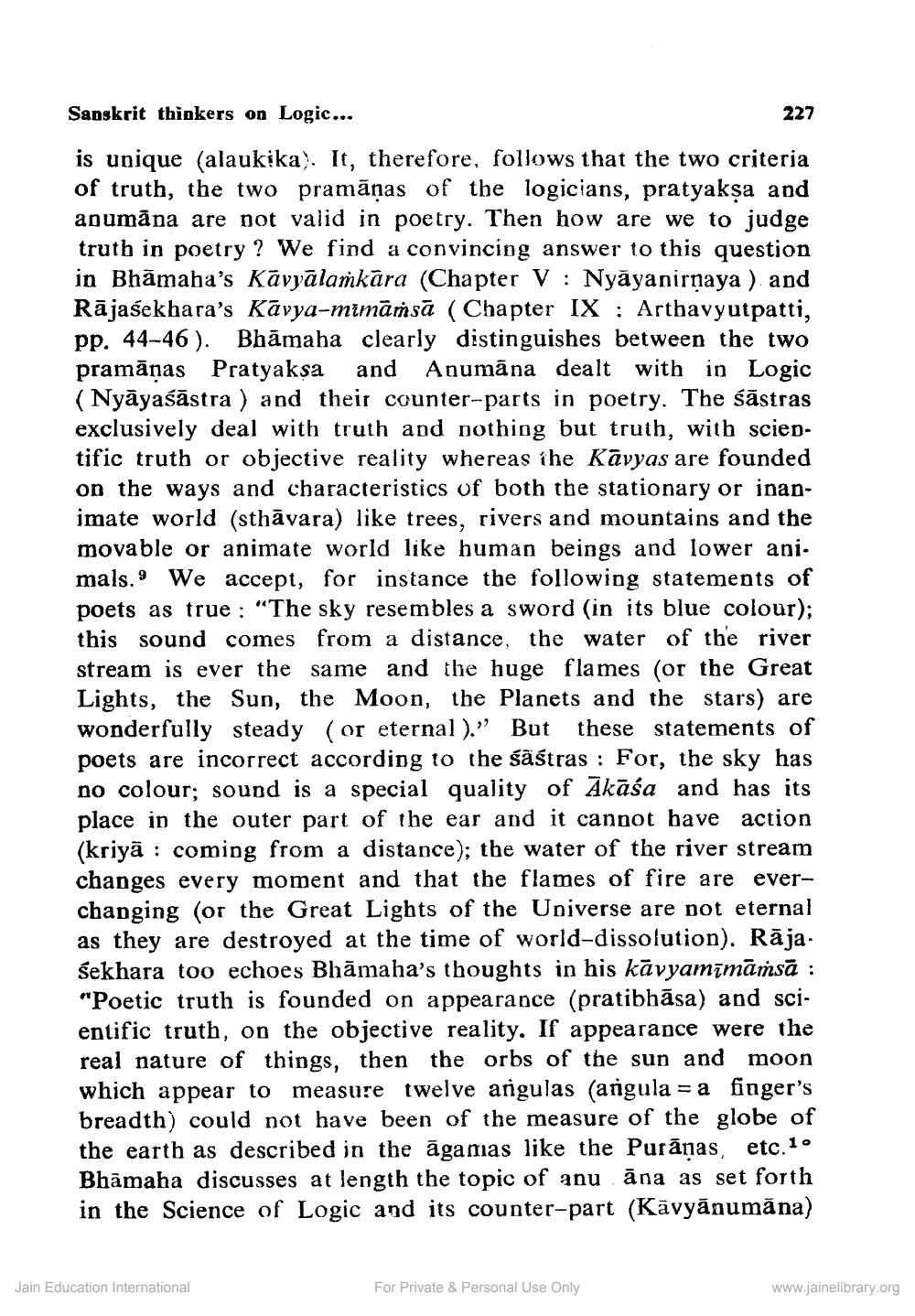________________
Sanskrit thinkers on Logic...
227
is unique (alaukika.. It, therefore, follows that the two criteria of truth, the two pramānas of the logicians, pratyaksa and apumāna are not valid in poetry. Then how are we to judge truth in poetry? We find a convincing answer to this question in Bhāmaha's Kāvyālamkāra (Chapter V: Nyāyanirnaya ) and Rājasekhara's Kāvya-mimāṁsā (Chapter IX : Arthavyutpatti, pp. 44-46). Bhāmaha clearly distinguishes between the two pramānas Pratyaksa and Anumāna dealt with in Logic (Nyāyaśāstra ) and their counter-parts in poetry. The śāstras exclusively deal with truth and nothing but truth, with sciedtific truth or objective reality whereas ihe Kāvyas are founded on the ways and characteristics of both the stationary or inanimate world (sthāvara) like trees, rivers and mountains and the movable or animate world like human beings and lower ani. mals. 9 We accept, for instance the following statements of poets as true : "The sky resembles a sword (in its blue colour); this sound comes from a distance, the water of the river stream is ever the same and the huge flames (or the Great Lights, the Sun, the Moon, the Planets and the stars) are wonderfully steady (or eternal ). But these statements of poets are incorrect according to the śäśtras : For, the sky has no colour; sound is a special quality of Akāśa and has its place in the outer part of the ear and it cannot have action (kriyā : coming from a distance); the water of the river stream changes every moment and that the flames of fire are everchanging (or the Great Lights of the Universe are not eternal as they are destroyed at the time of world-dissolution). Rāja. sekhara too echoes Bhāmaha's thoughts in his kävyamīmāṁsā : "Poetic truth is founded on appearance (pratibhāsa) and scientific truth, on the objective reality. If appearance were the real nature of things, then the orbs of the sun and moon which appear to measure twelve argulas (angula = a finger's breadth) could not have been of the measure of the globe of the earth as described in the āgamias like the Purānas, etc. 10 Bhāmaha discusses at length the topic of anu āna as set forth in the Science of Logic and its counter-part (Kāvyānumāna)
Jain Education International
For Private & Personal Use Only
www.jainelibrary.org




